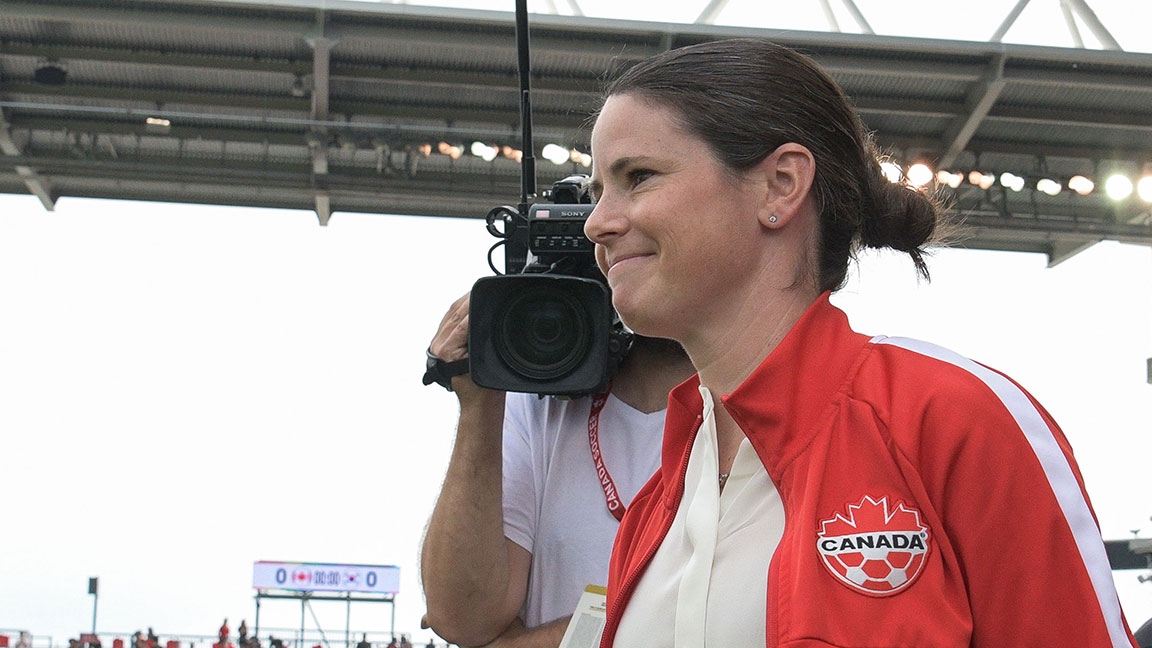FIFA+
Diana Matheson’s footballing resume is a formidable one, with 206 international caps, three FIFA Women’s World Cup™ campaigns, two Olympic bronze medals and numerous other titles with Canada to her name. But what lies ahead for her after retirement?
This is a question the 38-year-old has been wrestling with since long before the day in July 2021 when she hung up her boots for the last time.
“After a great career and a few unfortunate injuries I had to call it quits,” Matheson explained in an interview with FIFA.com. “Since then I’ve gone back to school. I’m mostly a full-time student at the moment,” she revealed.
“I’m trying to learn as much as I can about football and the business of football so that I can prepare myself for my next challenge. I know I want to stay involved in the women’s game, but I’m not sure exactly what role that will look like yet.”
To help her work this out, Matheson took part in the third Women in Football Leadership Programme run in partnership with UEFA.
“I didn’t know what to expect. I don’t think any of us really knew what we were getting into,” said the former midfielder, who netted the bronze medal-winning goal for Canada at the 2012 Olympic Games in London.
“The instructors were incredible. I think everyone in that room had done some kind of leadership training before, but the instruction on that course was just world class. And just the fact that 30 women from around the globe were able to come together and discuss their situations.
“Although those situations are so different in so many ways, they are essentially all the same because we are all working towards the same thing – building up women in football. The programme surpassed all my expectations.”
The opportunity to share experiences with participants from the most varied of backgrounds left a lasting impression on Matheson. Seeing the vastly different challenges that women from the Middle East or Africa face as they fight to build up the women’s game inspired her.
“I think it gave me a good boost,” she reflected. “I was able to connect with so many different people from around the world, all pushing for a lot of the same things. I know I can call any of them in the future if I’m travelling the world, meet up and talk about life and football.”
Building and expanding these networks is another crucial cornerstone of this programme for football’s female leaders.
But what exactly makes a good leader, and what sets them apart from others? For one thing, they need to constantly develop and train certain characteristics and skills – something that applies equally to leaders both on and off the pitch.
“When it comes to leadership personalities, people often think of extroverted, loud leaders, but we know that’s not true,” explained Matheson. “One of the things that definitely came across to me over and over again during the programme was authenticity. You need to be true to who you are and make sure you’re doing everything in an authentic way, because people notice if you’re not! You can lead in all sorts of ways as long as you’re being true to yourself,” she added.
“It’s also important to be aware of yourself and your strengths and to appreciate that your greatest strengths as a leader can also be your weaknesses in some cases. You just need to be aware of what those are so that you can lean on your strengths in certain circumstances, while in others you might have to manage them to succeed.”
Matheson is convinced that the more women take on leadership roles in football, the stronger the sport will be. Much has changed over the past decade, with women such as Sarai Bareman (Chief Women’s Football Officer at FIFA) and Nadine Kessler (Chief of Women’s Football at UEFA) continuing to drive this positive change. “It’s all happened so rapidly that it’s exciting to see what will happen over the next ten years,” said the Canadian.
“I was on holiday in Costa Rica and there was women’s football on TV at the airport. Could you have imagined seeing women’s football on television in Costa Rica ten years ago? No chance – but now you see it everywhere. The men’s and women’s games are growing closer, and it’s going to make the sport stronger.”
